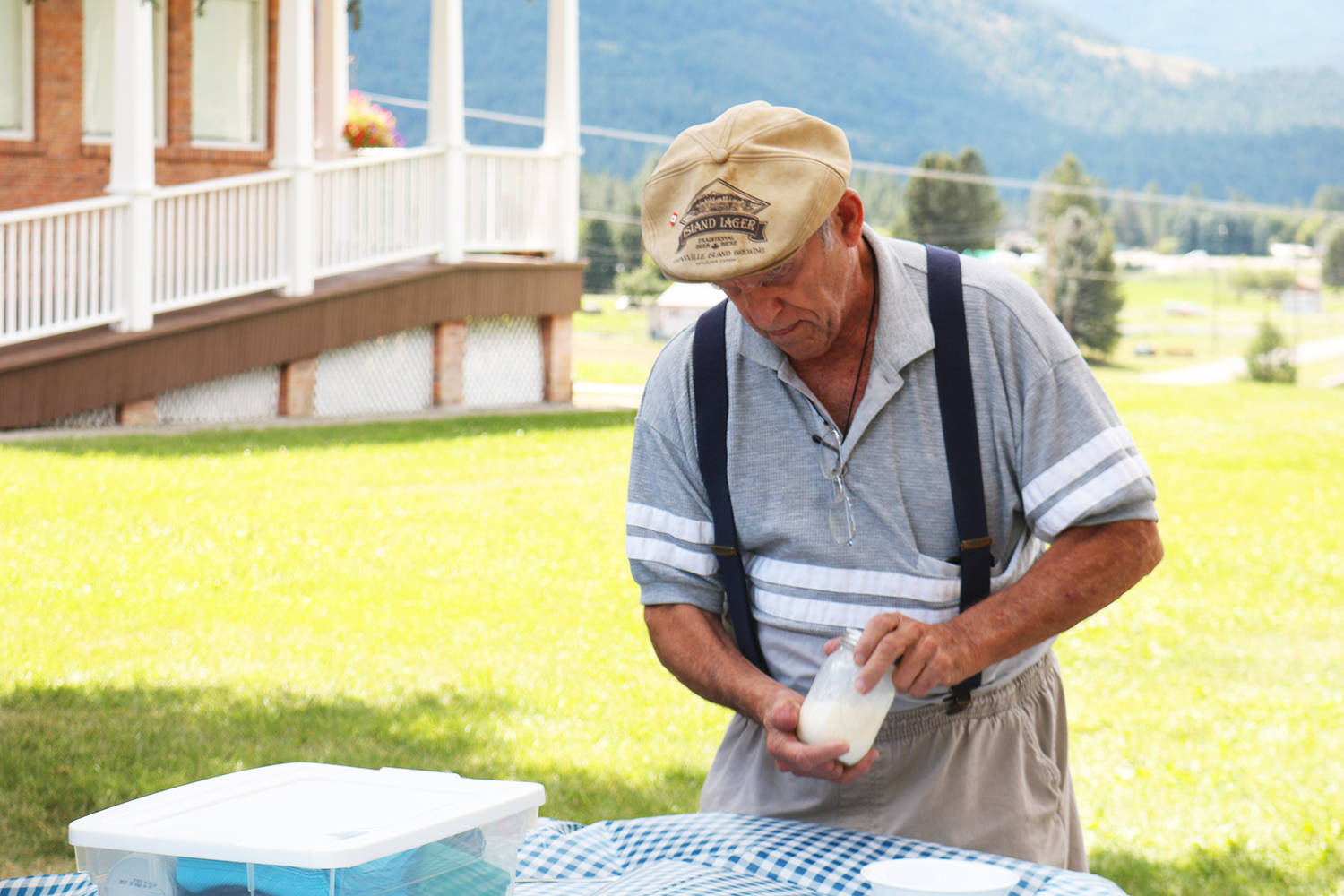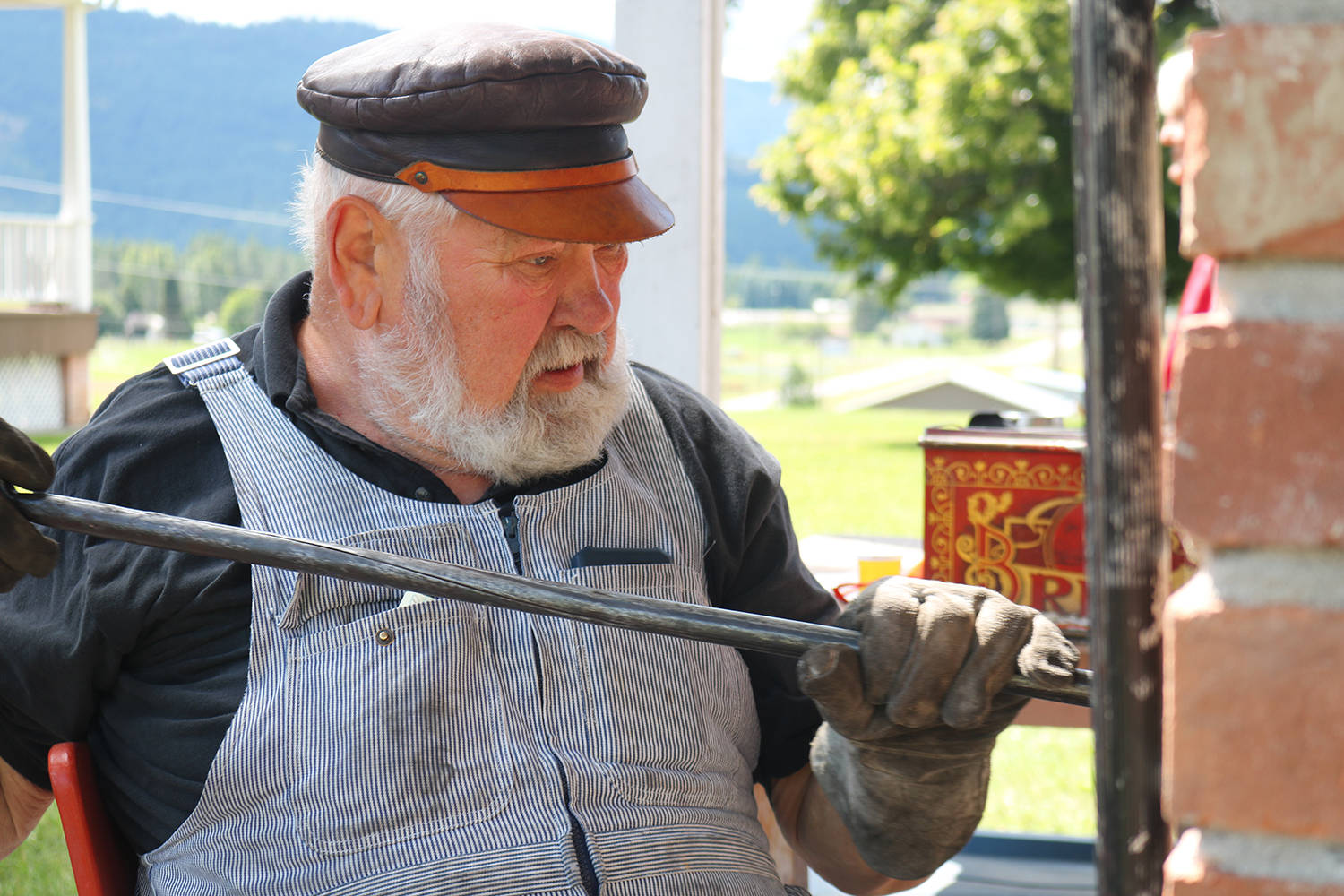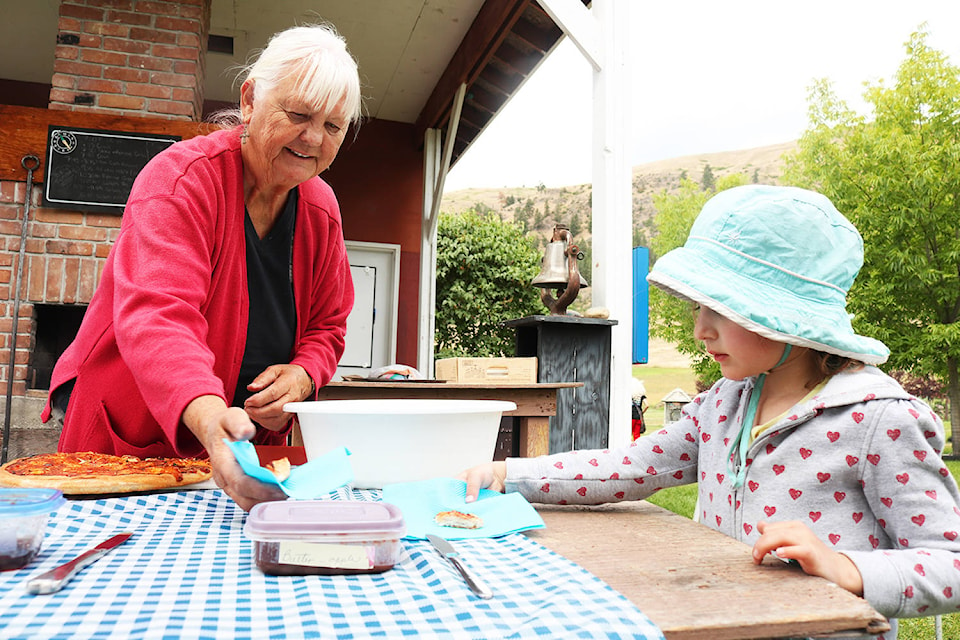Every Wednesday evening, Larry Jmaiff goes to the Boundary Museum and builds up a tower of logs and kindling in the outdoor brick oven. Later in the night before he goes to sleep, Joe Tatangelo makes sure that a bottle of cream is taken out of his fridge to warm to room temperature by morning. And before either man wakes up Thursday, Irene Perepolkin is mixing and kneeding piles and piles of bread dough at 5 a.m., getting ready for the day. When she’s timed it right, she can go back to sleep for a few moments before she has to head up to the museum too.
It’s a team effort between the three volunteers, the weather and the old brick oven at the museum that come together to create more than a dozen fluffy loaves of airy bread, protected by crusts crispy enough to be broken with the poke of a finger, each to be sold off to benefit the museum.
The pop-up bakery fires up every Thursday through the summer to sell a taste of history to visitors, and the smells of fresh bread have wafted beyond the valley too. Last Thursday, tourists scheduled their visits around when they could get a taste (usually around 11:30, depending on the heat of the oven).
The baking team insists that it is less of a precise science that some may imagine.
When the bricks turn white, the the temperature is just about right to pull out the coals and let the oven’s heat even out. As it cools down from upwards of 1,000 F to its ideal temperature of approximately 400 F for bread, the bakers throw a treat in for themselves too. A quick homemade pizza cooks nice and quickly around 600 F, giving the bakers a snack to hold them over until the bread’s done and lunch can start in earnest.
Leave the loaves in too long or put them in too hot and the result can be less than ideal, Jmaiff explained.
“We’ve baked them to be harder than croutons,” he laughed. More often than not though, his timing’s right.
Beside the oven, Tantangelo’s arms move and shake as he clutches a jam jar half-full of heavy cream. His manual butter churning takes around 20 minutes and doubles as a decent workout.
To pass the waiting time, Tantangelo joked with visitors, “Larry sometimes sings, but not very good.” Beyond that, the three watch the minutes tick by and talk about anything and everything, answering questions for curious and hungry tourists and locals alike about the process.
Suddenly, Jmaiff’s eyes catch his watch’s hands and he pulls away the metal oven door to reveal the browned loaves. Sheet after sheet, he and Perepolkin pull them out and transfer them into paper bags for sale. One loaf goes directly to the picnic table.
With a hollow rumble, Perepolkin’s breadknife carves through the crust and melts through the soft inside and steam wafts upwards. Perfect, again.
With an array of homemade spreads – apple butter, jams and Tatangelo’s hand-shook butter – another Thursday feast is offered, well deserved by the three volunteers and well appreciated by the spectators, who take home loaves to share.


